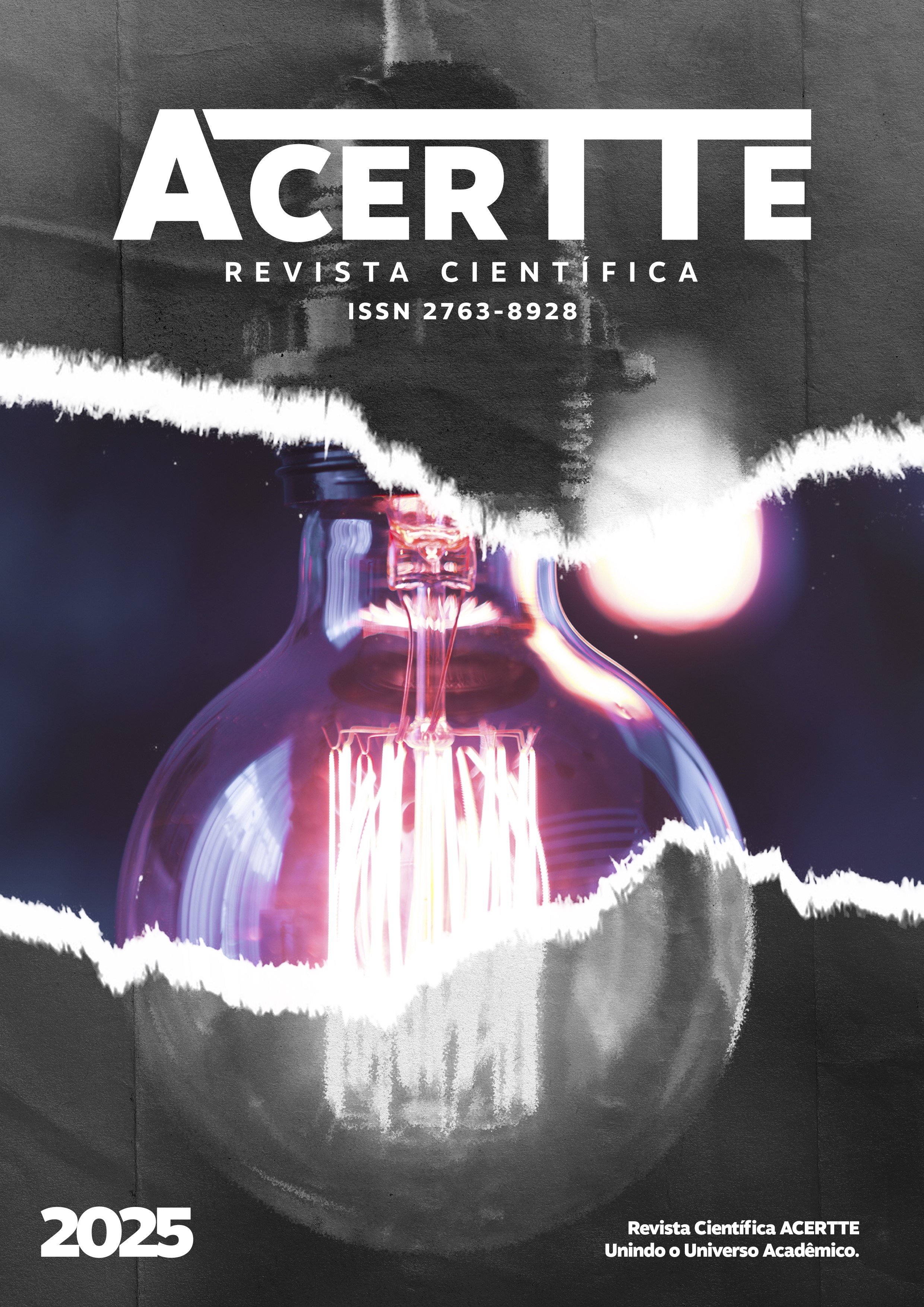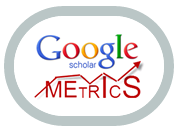ANÁLISIS BIBLIOMÉTRICA DE LA PRODUCCIÓN CIENTÍFICA SOBRE EL USO DE RESÍDUOS DE AVICULTURA EN LA PRODUCCIÓN DE ALIMENTOS
DOI:
https://doi.org/10.63026/acertte.v5i7.252Palabras clave:
Agronegocio. Fertilizante orgánico. Iimpacto académico. Sostenibilidad.Resumen
El presente estudio tiene como objetivo realizar un análisis bibliométrico de la literatura científica internacional sobre el uso de residuos de la avicultura, específicamente la cama de pollo, en la producción agrícola entre los años 2019 y 2024. La búsqueda de documentos fue realizada en la base de datos Web of Science (WOS) utilizando la cadena de búsqueda (“poultry litter” AND “soil” AND “manure”). La información fue procesada mediante los softwares R (paquete Bibliometrix) y VOSviewer. Se analizaron diversos indicadores bibliométricos, tales como: número de publicaciones, citaciones, países más productivos, revistas científicas más relevantes, instituciones y autores con mayor producción, coautorías, documentos más citados, palabras clave más frecuentes y mapas temáticos. Después de aplicar filtros de refinamiento, se identificaron 257 documentos válidos para el análisis, entre artículos originales y de revisión, todos en idioma inglés. Entre los principales hallazgos, se destaca una disminución del 18,67% en la tasa de crecimiento de publicaciones. Estados Unidos y Brasil lideraron en cantidad de publicaciones, siendo Ashworth AJ (13 estudios) y Li Y (8 estudios) los autores más productivos. Las palabras clave más frecuentes fueron: “manure”, “poultry litter”, “soil”, “nitrogen”, “management”, “phosphorus”, “growth”, “carbon”, “yield” y “quality”. La media de citaciones por documento fue de 8,595. Se observó que los países, instituciones y revistas más representativas están directamente relacionadas con las principales potencias productoras avícolas del mundo, como Estados Unidos, Brasil y China.
Descargas
Citas
ANDERSON, K.; MOORE, P.A., JR.; MARTIN, J.; ASHWORTH, A.J. Evaluation of a Novel Poultry Litter Amendment on Greenhouse Gas Emissions. Atmosphere 2021, 12, 563. https://doi.org/10.3390/atmos12050563
ADELI, A. et al. Effect of surface incorporation of broiler litter applied to no-till cotton on runoff quality. Journal Environmental Quality, v. 40, p. 566-574, 2011. Disponível em: http://dx.doi.org/10.2134/jeq2010.0175.
ASHWORTH, A. J.; CHASTAIN, J. P.; MOORE Jr., P. A. Nutrient characteristics of poultry manure and litter. ASA Special Publication, 2020. DOI: https://doi.org/10.2134/asaspecpub67.c5.
BERNIGAUD, Irma Isabel; GANGE, Juan Martín. Tratamiento de la cama de pollo mediante apilado: evaluación en granja comercial. 2016.
CASTRO JÚNIOR, Luiz Gonzaga de. UFLA é 1ª universidade latino-americana pelo comércio justo no Brasil. UFLA, 2015. Disponível em: https://ufla.br/arquivo-de-noticias/8844-ufla-e- 1a-universidade-latinoamericana-pelo-comercio-justo-no-brasil. Acesso em: 3 out. 2024.
CORRÊA-JUNIOR, D.; PARENTE, C. E. T.; FRASES, S. Hazards associated with the combined application of fungicides and poultry litter in agricultural areas. J Xenobiot, v. 14, n. 1, p. 110-134, 2024. DOI: 10.3390/jox14010007.
DELAUNE, R. D. et al. Use of poultry litter as a nutrient source for crops. In: Advances in Agronomy. Academic Press, 2006. v. 90, p. 237-299.
DONTHU, N. et al. How to conduct a bibliometric analysis: an overview and guidelines. Journal of Business Research, v. 133, p. 285-296, 2021.
Dróżdż, K. Wystalska, K. Malińska, A. Grosser, A. Grobelak, M. Kacprzak.Management of poultry manure in Poland – current state and future perspectives. J. Environ. Manag., 264 (2020). DOI: 10.1016/j.jenvman.2020.110327.
FERIOTTI, Marco Aurélio; FORMIGONI, Alexandre. Análise bibliométrica sobre a tendência da aplicação da manufatura híbrida. South American Development Society Journal, v. 8, n. 24, 2022. DOI: 10.24325/issn.2446-5763.v8i24p64-80.
FERNANDES, A. L. T. et al. Fertilizers organic coffee, with use chicken manure in replacing the mineral fertilizer. Coffee Science, v. 8, n. 4, p. 486-499, 2013.
GURMESSA, B. et al. Variations in bacterial community structure and antimicrobial resistance gene abundance in cattle manure poultry litter. Environmental Research, v. 197, p. 111011, 2021. Disponível em: https://doi.org/10.1016/j.envres.2021.111011.
GURWICK, N. P. et al. A systematic review of biochar research, with a focus on its stability in situ and its promise as a climate mitigation strategy. PloS One, v. 8, e75932, 2013.
GRŽINIĆ, G. et al. Intensive poultry farming: a review of the impact on the environment and human health. Science of the Total Environment, v. 858, p. 160014, 2023. DOI: 10.1016/j.scitotenv.2022.160014.
HOOVER, N. L. et al. Long-term impact of poultry manure on crop yield, soil and water quality, and crop revenue. Journal of Environmental Management, v. 252, p. 109582, 2019.
HU, Y.; CHENG, H.; TAO, S. Environmental and human health challenges of industrial livestock and poultry farming in China and their mitigation. Environmental International, v. 107, p. 111-130, 2017.
HERNANDES, R.; CAZETTA, J. O.; MORAES, V. M. B. Frações nitrogenadas, glicídicas e amônia liberada pela cama de frango de corte em diferentes densidades e tempos de confinamento. Revista Brasileira de Zootecnia, v. 31, n. 4, p. 1795-1802, 2002.
JENKINS, M. et al. Pathogens and potential risks related to livestock and poultry: animal manure management; extension issues. United States Department of Agriculture, National Institute of Food and Agriculture (USDA NIFA), 2015.
JOHN, H., SANDERS., RICHARD, L., MEYER., ROGER, W., FOX., FERNANDO, CURI, PERES. (1989). Agricultural University Institution Building in Brazil: Successes, Problems, and Lessons for Other Countries. American Journal of Agricultural Economics, 71(5):1206- 1210. doi: 10.2307/1243108.
KYAKUWAIRE, et al. How safe is chicken litter for land application as an organic fertilizer? A review. International Journal of Environmental Research and Public Health, v. 16, p. 3521, 2019.
LAFON, P.; LAFON, F. L’œuf et les ovo produits. Agroalimentaire, 2015.
LI, Z. et al. Green manure incorporation with reductions in chemical fertilizer inputs improves rice yield and soil organic matter accumulation. Journal of Soils Sediments, v. 20, p. 2784– 2793, 2020.
MALOMO, G. A.; MADUGU, A. S.; BOLU, S. A. Sustainable animal manure management strategies and practices. InTech, 2018. DOI: 10.5772/intechopen.78645.
MEDEROS, LOURDES. What's Happening Around Florida: IFAS Research. University of Florida, 2024. Disponível em: https://research.ifas.ufl.edu/. Acesso em: 2 out. 2024.
MUNARETTO, J. S.; YONKOS, L.; AGA, D. S. Transformation of ionophore antimicrobials in poultry litter during pilot-scale composting. Environmental Pollution, v. 212, p. 392-400, 2016.
NAMIUCHI, Nausira Noriko. Biodigestão anaeróbia e características de cama de frangos obtida sob diferentes quantidades iniciais de casca de arroz e três tipos de cobertura de galpões em Dourados-MS. 2002. 122 f. Tese (Doutorado) – Universidade Estadual Paulista, Faculdade de Ciências Agronômicas, 2002.
NORTH CAROLINA STATE UNIVERSITY. Poultry litter as a fertilizer source. Steph Kulesza; Mahmoud Sharara. AG-439-05, 2020. Disponível em: https://content.ces.ncsu.edu/poultry-litter-as-a-fertilizer-source. Acesso em: 25 ago. 2024.
PELLETIER, N. et al. Sustainability in the Canadian egg industry—learning from the past, navigating the present, planning for the future. Sustainability, v. 10, n. 10, p. 3524, 2018.
POKHREL, Sapana; SHOBER, Amy. Maximizing the potential of poultry litter as a valuable nutrient source for sustainable crop production. University of Delaware Cooperative Extension, 2024.
ROULIA, Maria. Sustainable utilization of humic substances and organic waste in green agriculture. Agriculture, v. 14, n. 1, p. 115, 2024.
SILVA, Naysa Vitória Soares da; GUIMARÃES, Carla Regina Rocha. Aspectos agronômicos e ambientais na utilização da cama de frango. Ciências Exatas e da Terra, v. 27, n. 128, 2023. DOI: 10.5281/zenodo.10113400.
UNIVERSITY OF FLORIDA. Institute of Food and Agricultural Sciences. A University of Florida é reconhecida mundialmente por suas contribuições em ciências agrárias e ambientais. Disponível em: https://ifas.ufl.edu. Acesso em: 2 out. 2024.
USDA. Livestock and poultry: world markets and trade. United States Department of Agriculture and Foreign Agricultural Service, 2024.
VAN ECK, N. J.; WALTMAN, L. Software survey: VOSviewer, a computer program for bibliometric mapping. Scientometrics, n. 84, p. 523-538, 2010.
VIEGAS, C. et al. Fungal contamination of poultry litter: a public health problem. Journal of Toxicology and Environmental Health-Part A Current Issues, v. 75, p. 1341-1350, 2012.
WANG, J. et al. A bibliometric review of research trends on bioelectrochemical systems. Current Science, v. 109, p. 2204–2211, 2015.
XU, F. et al. Response of soil bacterial communities, antibiotic residuals, and crop yields to organic fertilizer substitution in north China under wheat–maize rotation. Science of the Total Environment, v. 785, p. 147248, 2021.
ZHANG, Hailin; HAMILTON, Douglas W.; PAYNE, Josh. Using poultry litter as fertilizer. Division of Agricultural Sciences and Natural Resources, Oklahoma State University, 2017.
ZUPIC, I.; ČATER, T. Bibliometric methods in management and organization. Organizational Research Methods, v. 18, p. 429–472, 2015.
Descargas
Publicado
Cómo citar
Número
Sección
Categorías
Licencia
Derechos de autor 2025 REVISTA CIENTÍFICA ACERTTE

Esta obra está bajo una licencia internacional Creative Commons Atribución 4.0.
Os direitos autorais dos artigos/resenhas/TCCs publicados pertecem à revista ACERTTE, e seguem o padrão Creative Commons (CC BY 4.0), permitindo a cópia ou reprodução, desde que cite a fonte e respeite os direitos dos autores e contenham menção aos mesmos nos créditos. Toda e qualquer obra publicada na revista, seu conteúdo é de responsabilidade dos autores, cabendo a ACERTTE apenas ser o veículo de divulgação, seguindo os padrões nacionais e internacionais de publicação.










